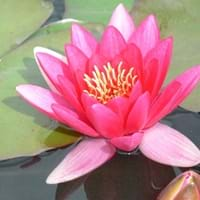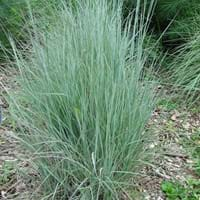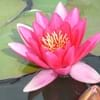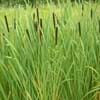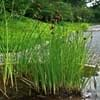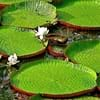Life Span
Perennial
Perennial
Origin
Hybrid origin
North America, United States, Canada
Types
Not Available
not available
Habitat
Ponds
Hillside, Prairies, Roadsides
USDA Hardiness Zone
6-10
2-7
Sunset Zone
21,22
1a, 1b, 2a, 2b, 3a, 3b, 4, 5, 6, 7, 8, 9, 10, 11, 12, 13, 14, 15, 16, 17, 18, 19, 20, 21, 22, 23, 24
Habit
Spreading
Upright/Erect
Minimum Height
Not Available
Flower Color
Yellow, Orange, Light Yellow, Gold, Peach, Orange Red, Dark Salmon, Bronze
Not Available
Flower Color Modifier
Multi-Color
Bicolor
Fruit Color
Green, Not Available
Not Available
Leaf Color in Spring
Green, Sienna
Blue Green, Gray Green
Leaf Color in Summer
Green, Sienna
Light Green
Leaf Color in Fall
Green, Sienna
Yellow, Red, Bronze, Orange Red
Leaf Color in Winter
Not Available
Tan, Bronze
Leaf Shape
Round
Grass like
Plant Season
Summer, Fall
Summer, Fall, Winter
Sunlight
Full Sun, Partial Sun
Full Sun
Type of Soil
Clay, Loam, Sand
Loam, Sand
The pH of Soil
Neutral
Acidic, Neutral, Alkaline
Soil Drainage
Poorly Drained
Average
Bloom Time
Summer
Summer, Late Summer
Tolerances
Wet Site
Drought
Where to Plant?
In Water
Container, Ground, Pot
How to Plant?
Stem Planting
Divison, Seedlings
Plant Maintenance
Medium
Low
Watering Requirements
Plant grows in water
Requires watering in the growing season
In Summer
Lots of watering
Lots of watering
In Spring
Moderate
Ample Water
In Winter
Average Water
Ample Water
Soil pH
Neutral
Acidic, Neutral, Alkaline
Soil Type
Clay, Loam, Sand
Loam, Sand
Soil Drainage Capacity
Poorly Drained
Average
Sun Exposure
Full Sun, Partial Sun
Full Sun
Pruning
Remove damaged leaves, Remove dead branches, Remove dead leaves
No pruning needed in the early stages, Remove damaged leaves, Remove dead branches, Remove dead leaves
Fertilizers
All-Purpose Liquid Fertilizer
No fertilizers needed
Pests and Diseases
Not Available
fungus, Leaf spot
Plant Tolerance
Drought
Drought
Flowers
Showy
Insignificant
Flower Petal Number
Single
Single
Foliage Texture
Coarse
Fine
Foliage Sheen
Glossy
Matte
Self-Sowing
Not Available
Yes
Allergy
Not Available
Not Available
Aesthetic Uses
Showy Purposes, Water gardening
Not Used For Aesthetic Purpose
Beauty Benefits
Not Available
Not Available
Environmental Uses
Air purification
Erosion control, Wildlife
Medicinal Uses
Not Available
Not Available
Part of Plant Used
Leaves, Root, Stem
Whole plant
Other Uses
Culinary use, Used as Ornamental plant, Used in herbal medicines
Not Available
Used As Indoor Plant
Yes
No
Used As Outdoor Plant
Yes
Yes
Garden Design
Container, Cutflower, Water Gardens
Dried Flower / Everlasting, Cutflower, Dried Flower/Everlasting, Groundcover, Mixed Border, Wildflower
Botanical Name
NYMPHAEA 'Andreana'
SCHIZACHYRIUM scoparium
Common Name
Hardy Waterlily
Little Bluestem
In Hindi
Hardy Waterlily
little bluestem
In German
Hardy Waterlily
wenig bluestem
In French
Hardy Waterlily
barbon
In Spanish
Hardy Waterlily
Poco bluestem
In Greek
Hardy Waterlily
Μικρή bluestem
In Portuguese
Hardy Waterlily
pouco bluestem
In Polish
Hardy Waterlily
trochę bluestem
In Latin
Hardy Waterlily
parum bluestem
Phylum
Magnoliophyta
Magnoliophyta
Class
Magnoliopsida
Liliopsida
Order
Nymphaeales
Cyperales
Family
Nymphaeaceae
Poaceae
Genus
Nymphaea
Schizachyrium
Clade
Angiosperms
Angiosperms, Commelinids, Monocots
Tribe
Not Available
Andropogoneae
Subfamily
Not Available
Panicoideae
Number of Species
Not Available
Not Available
Properties of Hardy Waterlily and Little Bluestem
Wondering what are the properties of Hardy Waterlily and Little Bluestem? We provide you with everything About Hardy Waterlily and Little Bluestem. Hardy Waterlily doesn't have thorns and Little Bluestem doesn't have thorns. Also Hardy Waterlily does not have fragrant flowers. Hardy Waterlily has allergic reactions like Not Available and Little Bluestem has allergic reactions like Not Available. Compare all the properties and characteristics of these two plants. Find out which of these plant can be used as indoor plant. If you are interested to decorate your house and garden, find out aesthetic uses, compare them and select the plant which will beautify your surrounding. Along with beautification, try comparing medicinal and edible uses of Hardy Waterlily and Little Bluestem and you can choose the plant having best and most benefits.
Season and Care of Hardy Waterlily and Little Bluestem
Season and care of Hardy Waterlily and Little Bluestem is important to know. While considering everything about Hardy Waterlily and Little Bluestem Care, growing season is an essential factor. Hardy Waterlily season is Summer and Fall and Little Bluestem season is Summer and Fall. The type of soil for Hardy Waterlily is Clay, Loam, Sand and for Little Bluestem is Loam, Sand while the PH of soil for Hardy Waterlily is Neutral and for Little Bluestem is Acidic, Neutral, Alkaline.
Hardy Waterlily and Little Bluestem Physical Information
Hardy Waterlily and Little Bluestem physical information is very important for comparison. Hardy Waterlily height is Not Available and width 90.00 cm whereas Little Bluestem height is 60.00 cm and width 30.00 cm. The color specification of Hardy Waterlily and Little Bluestem are as follows:
Hardy Waterlily flower color: Yellow, Orange, Light Yellow, Gold, Peach, Orange Red, Dark Salmon and Bronze
Hardy Waterlily leaf color: Green and Sienna
Little Bluestem flower color: Not Available
- Little Bluestem leaf color: Blue Green and Gray Green
Care of Hardy Waterlily and Little Bluestem
Care of Hardy Waterlily and Little Bluestem include pruning, fertilizers, watering etc. Hardy Waterlily pruning is done Remove damaged leaves, Remove dead branches and Remove dead leaves and Little Bluestem pruning is done No pruning needed in the early stages, Remove damaged leaves, Remove dead branches and Remove dead leaves. In summer Hardy Waterlily needs Lots of watering and in winter, it needs Average Water. Whereas, in summer Little Bluestem needs Lots of watering and in winter, it needs Ample Water.
